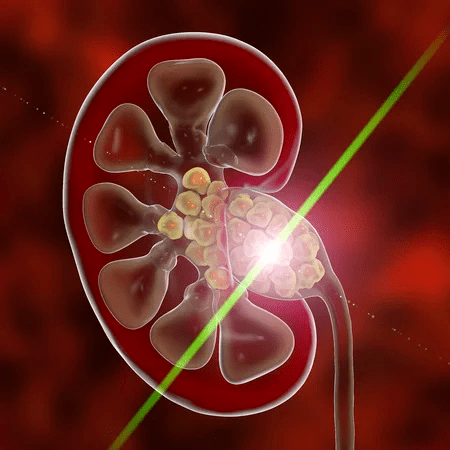Laser surgery for prostate and urinary stones

The use of laser equipment in urology allows us to solve multiple diseases in a minimally invasive way using state-of-the-art technology.
URINARY STONES:
The calculations or stones can appear both in the kidneys, the ureters or the bladder. In the past, open surgeries with large incisions were required to treat stones. Today, flexible endoscopic equipment is used to approach stones through the urethra, without the need for any type of incision. By using the Holmium laser, the stones will be pulverized and then urinated in the form of grit.
This type of surgery reduces postoperative pain and guarantees a much faster recovery of the patient.
In many cases, a thin catheter, called a Double J catheter, is left inside to avoid pain and postoperative complications, which is removed a few days later in a very simple outpatient procedure. Only in cases of large kidney stones, another type of surgery called Percutaneous Nephrolithotomy is required in which a small incision of less than 1 cm is made in the patient’s back.
PROSTATE LASER SURGERY
Prostatic hyperplasia is a benign growth of the prostate. It is produced with advancing age and by the influence of the normal testosterone of every man. This growth produces progressive obstruction of urine outflow. Its most frequent symptoms are:
- Decreased micturition caliber
- Increased frequency of urination.
- Sensation of incomplete emptying.
- Burning to urinate.
- Dribbling at the end of urination.
- Effort to urinate.
- Getting up frequently while sleeping to urinate.
DO YOU HAVE ANY QUESTION?
Enter your data and we will contact you soon.

